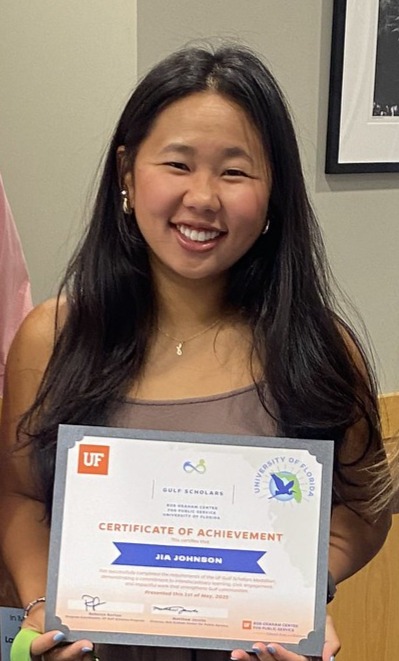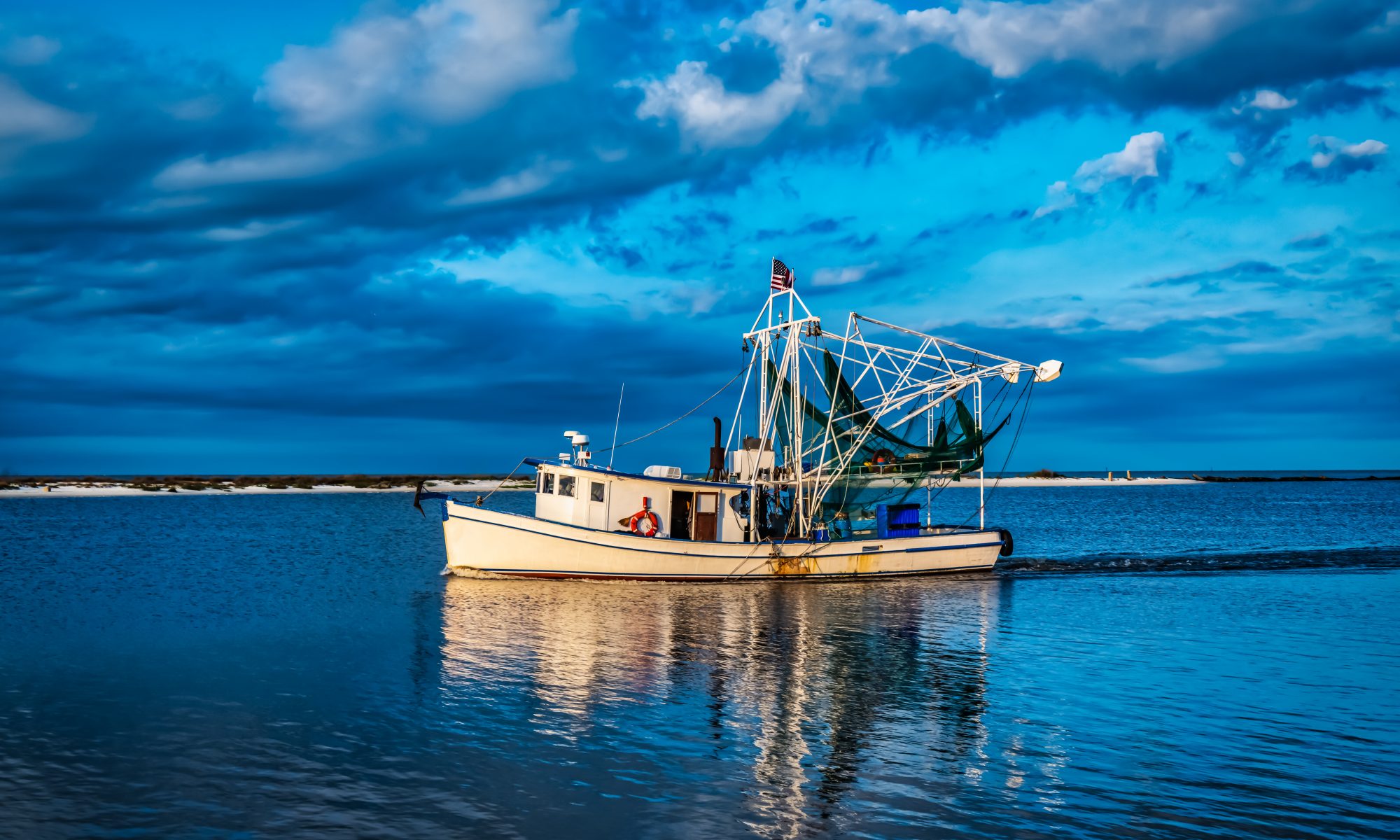
Student: Jia Johnson, Spring ’25 graduate in marine science and computer science
Mentor: Dr. Edward Camp
Florida’s commercial fishing industry is a vital part of the Gulf Coast’s economy, heritage, and identity. But the industry is changing—fast. For her Gulf Impact Project, Jia Johnson explored the shifting geography of Florida’s Gulf fisheries, analyzing nearly four decades of data to uncover how environmental pressures, economic shifts, and policy changes are reshaping where and how commercial fishing happens.
Using landings data from the Florida Fish and Wildlife Conservation Commission, Jia analyzed trends from 1986 to 2024 across seven Gulf Coast counties in Southwest Florida. Her research focused on key indicators of fisheries health and distribution such as pounds landed, number of trips, and catch value, examining how these have changed over time.
Key Findings:
-
Overall Decline: Jia found that both the number of fishing trips and total pounds landed have decreased significantly across the region, signaling long-term stress on the industry.
-
Geographic Shifts: While Pinellas County has historically led in total landings, counties like Hillsborough, Lee, and Manatee have increased their share in recent years. Meanwhile, landings in Collier and Charlotte have declined.
-
Species Dynamics: A small number of species dominate landings, but shifts in ocean conditions and ecological factors are affecting species distribution, requiring fishers to adapt quickly to new realities.
-
Underlying Pressures: The research highlights critical factors influencing these patterns, including stronger storms, sea level rise, the loss of working waterfronts, and the aging of the fishing workforce.
Why It Matters:
Jia’s work underscores the vulnerability of Florida’s fishing industry to both environmental and social change. By visualizing long-term spatial trends, her project offers critical insights for policymakers, fisheries managers, and coastal communities seeking to support sustainable, resilient fisheries in the Gulf. Her findings contribute to a growing body of knowledge calling for integrated approaches that invest in future generations of fishers, preserve waterfront infrastructure, and prepare for climate-driven shifts.
Report
Read Jia’s full report at the following link: Florida’s Commercial Fisheries in Transition: A Vital Industry Facing Ecological and Economic Pressures
Student testimonial
As I dug into the data, I began to see bigger stories emerge—like how the species being caught have shifted, how fishing activity has moved over time, and how these changes could be linked to environmental shifts, new regulations, or even changes in who’s doing the fishing. One topic that stood out was the “graying of the fleet,” which refers to the aging population of commercial fishermen and the challenges that creates for the future of the industry.
Another major takeaway was how critical Florida’s working waterfronts are—not just for fishing, but for community identity and economic stability. These areas are increasingly at risk from hurricanes, sea level rise, and development. My project made it clear how important it is to support these spaces and the people who depend on them.
Overall, this experience was a turning point for me. It connected the dots between science, policy, and community, and it helped me see the real-world impact of data analysis. It also confirmed that I want to keep working at the intersection of environmental science and data science. As I begin graduate school in Applied Data Science and Coastal & Oceanographic Engineering, I’m excited to keep building on this experience and contribute to more projects that support sustainable coastal futures.
